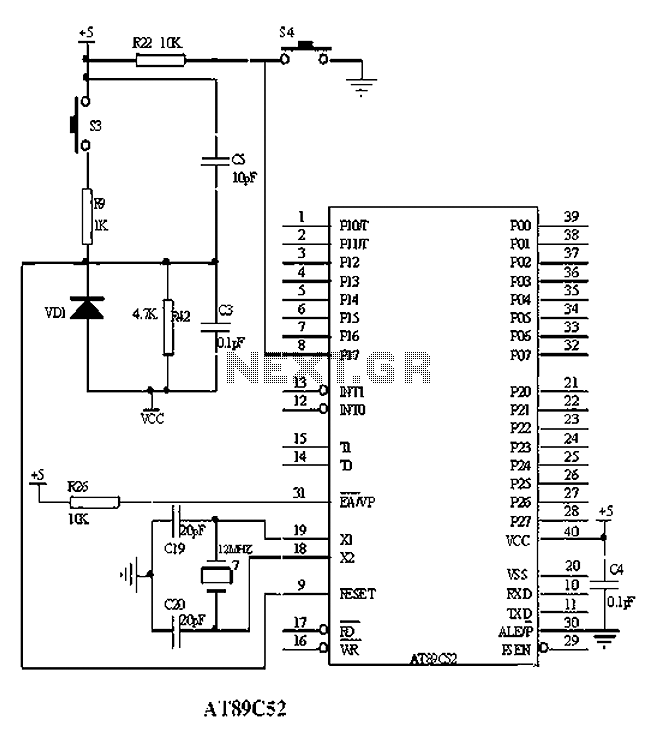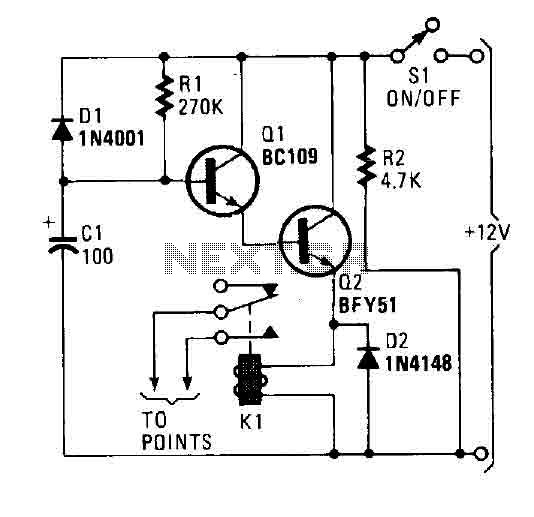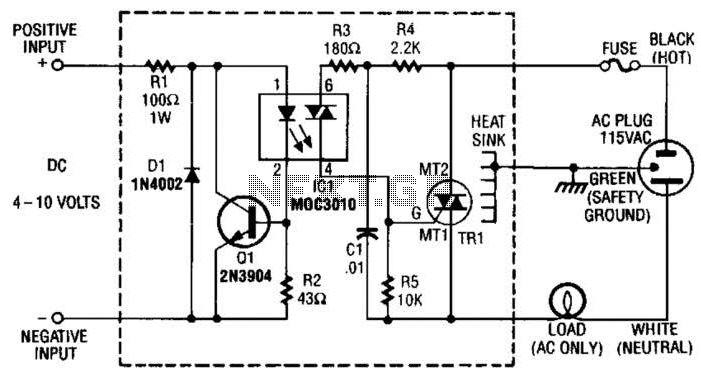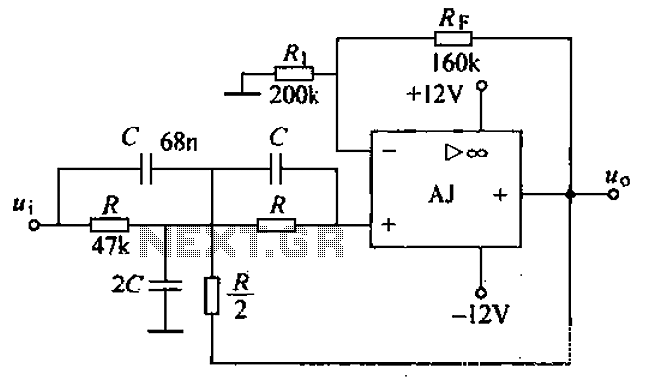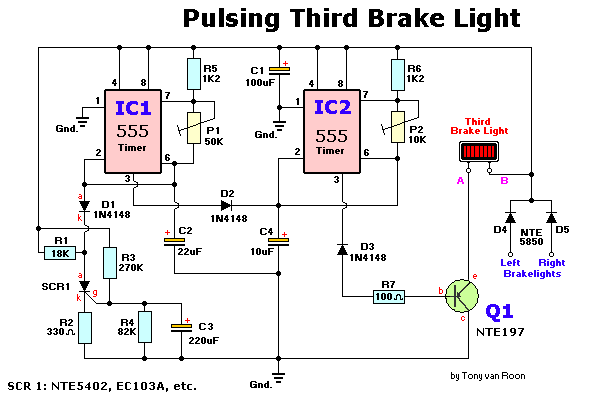
Fuzz circuit
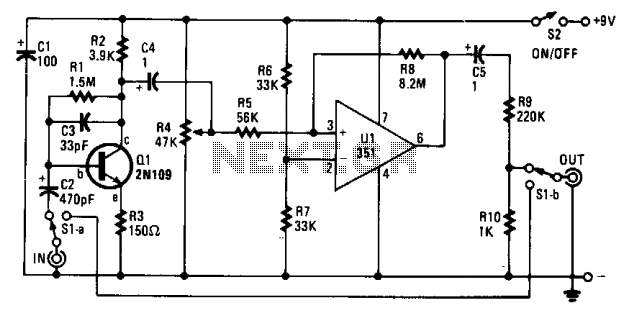
Guitar fuzz boxes have been a staple in rock music since its inception, with minimal advancements over the years. This particular design stands out as it not only distorts sound but also modulates the output in sync with the peaks of the waveform from the guitar pickup, utilizing a Schmitt trigger operational amplifier circuit. Additionally, capacitor C2 warrants further clarification. While it is typically a 1- or 2-µF electrolytic capacitor, a value of 470 pF is suggested here as an experimental option that can yield unique effects.
The circuit design of this guitar fuzz box incorporates a Schmitt trigger op-amp, which serves a dual purpose. It not only induces distortion but also creates a pulsing effect by responding dynamically to the input signal's waveform peaks. This is achieved through a feedback mechanism that ensures the op-amp transitions between its high and low states at specific threshold levels, effectively shaping the output waveform.
The choice of capacitor C2 is critical in influencing the sound characteristics of the fuzz box. The standard values of 1 or 2 microfarads (µF) are commonly used for stability and conventional distortion effects. However, substituting C2 with a 470 picofarad (pF) capacitor introduces a notable variation in the circuit's response. This smaller capacitance allows for higher frequency effects, which can produce a more pronounced and unique distortion characteristic, appealing to experimental musicians seeking novel sound textures.
In addition to the op-amp and capacitor, the circuit may include resistors and additional capacitors that help to fine-tune the gain and frequency response. The overall design emphasizes the importance of component selection and configuration to achieve the desired sonic output. This approach not only enhances the traditional fuzz effect but also opens avenues for creative sound manipulation, making it a valuable tool for guitarists looking to expand their tonal palette.It seems that guitar fuzz boxes have been around since the beginning of rock, and have seen little improvement over the years. This one is somewhat different because rather than simply distorting the sound, it also pulses in step with the peaks of the waveform from the pickup because of the Schmitt trigger op amp circuit.
Capacitor C2 requires some explanation. It should normally be a 1- or 2-µ¥ electrolytic capacitor. However, we show the value as 470 pF because it's recommended as an experimental value giving far out effects.
The circuit design of this guitar fuzz box incorporates a Schmitt trigger op-amp, which serves a dual purpose. It not only induces distortion but also creates a pulsing effect by responding dynamically to the input signal's waveform peaks. This is achieved through a feedback mechanism that ensures the op-amp transitions between its high and low states at specific threshold levels, effectively shaping the output waveform.
The choice of capacitor C2 is critical in influencing the sound characteristics of the fuzz box. The standard values of 1 or 2 microfarads (µF) are commonly used for stability and conventional distortion effects. However, substituting C2 with a 470 picofarad (pF) capacitor introduces a notable variation in the circuit's response. This smaller capacitance allows for higher frequency effects, which can produce a more pronounced and unique distortion characteristic, appealing to experimental musicians seeking novel sound textures.
In addition to the op-amp and capacitor, the circuit may include resistors and additional capacitors that help to fine-tune the gain and frequency response. The overall design emphasizes the importance of component selection and configuration to achieve the desired sonic output. This approach not only enhances the traditional fuzz effect but also opens avenues for creative sound manipulation, making it a valuable tool for guitarists looking to expand their tonal palette.It seems that guitar fuzz boxes have been around since the beginning of rock, and have seen little improvement over the years. This one is somewhat different because rather than simply distorting the sound, it also pulses in step with the peaks of the waveform from the pickup because of the Schmitt trigger op amp circuit.
Capacitor C2 requires some explanation. It should normally be a 1- or 2-µ¥ electrolytic capacitor. However, we show the value as 470 pF because it's recommended as an experimental value giving far out effects.

